One of the best things about working at a museum with such a vast collection is that I get to work on a variety of projects about so many different topics. I have had the opportunity to be involved with large, long-term exhibits; one-day exhibitions; outreach activities; and educational programs. It’s hard to choose which one is my favorite, because each provided different experiences and interactions with our visitors. But as I have been reminiscing recently, there is one event that prominently stands out, making it one of my favorite days at the Museum thus far.
Such a Great Day!
In March 2019, a school group asked to use our Museum to host a 24-hour read-a-thon of Moby Dick. Yep, you read that right. A class of juniors and seniors spent a full 24 hours (supervised!) at The Mariners’ Museum, camping out overnight, taking turns reading out loud passages from Herman Melville’s classic novel, first published in 1851. This event was led by a wonderful group of AP English high school students of the Norfolk Academic Guild. They came up with the idea and contacted the Museum; and we were all eager to be involved.
And all credit goes to these kids. They did a great job setting everything up on the day of the event and arranging the reading order by the participants. Seeing their enthusiasm and creativity was inspiring. I got to work collaboratively with our Education team, along with our Collections, and Library and Archives Departments. What made this day so much fun was that, not only were the kids so engaged with the event, but we, the staff of the Museum, also got to sign up to read various passages from the book. Okay, so to some people that may not sound fun. But if you haven’t noticed by now, we museum folk are proud, self-proclaimed nerds!
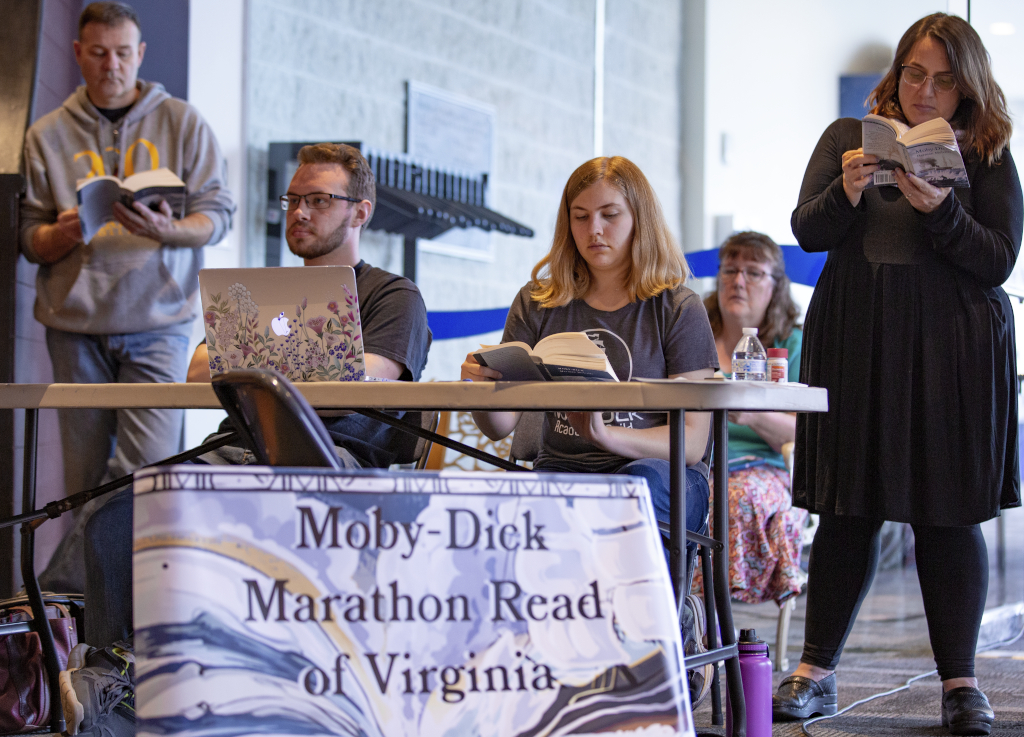
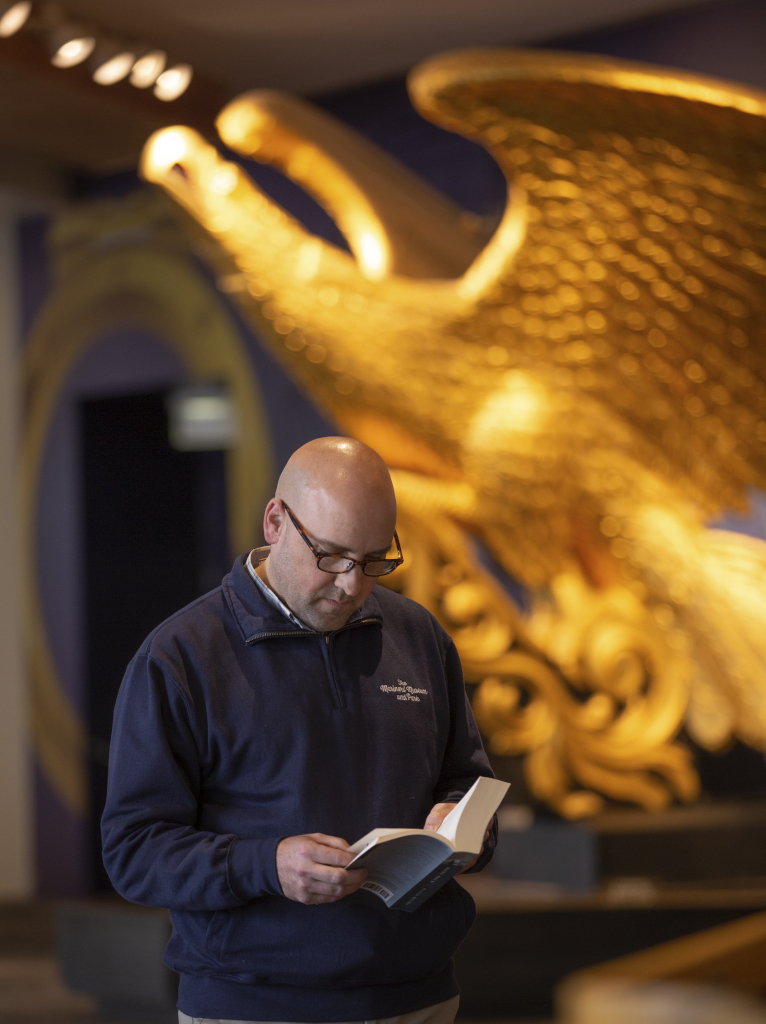
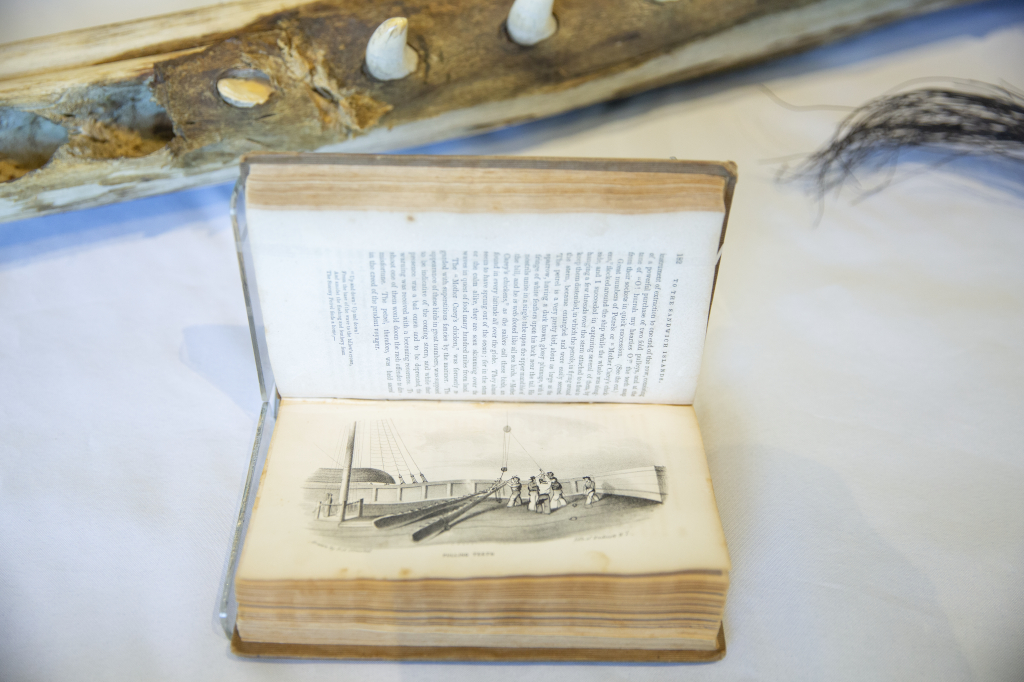
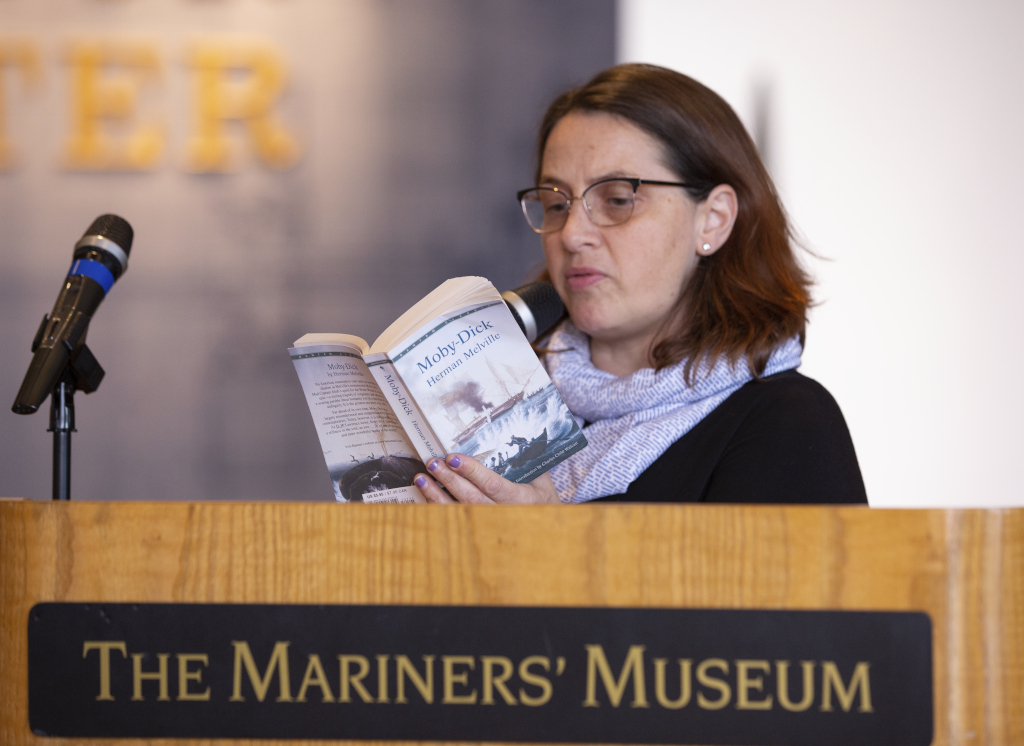
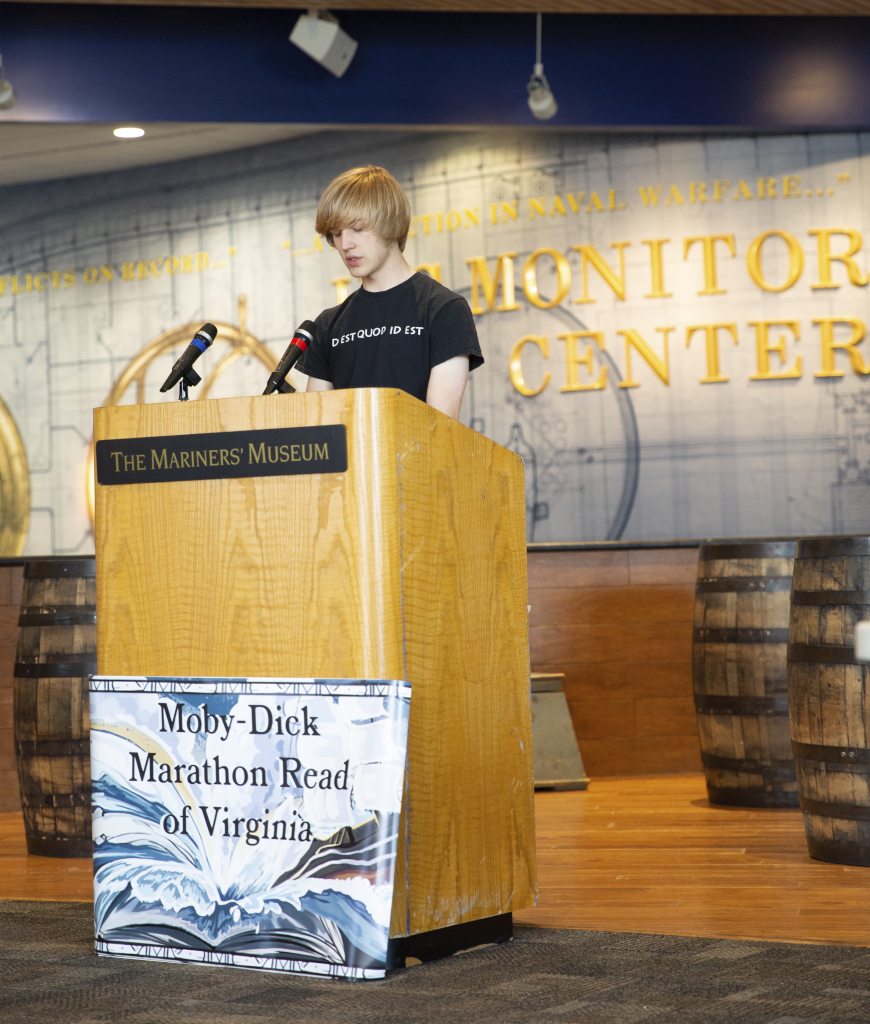
If you have never read Moby Dick, I will not give any spoilers away. Essentially, it is an epic tale of a captain seeking revenge on a massive white whale. There’s much more to the story, but you’ll just have to read the book – or at least the Cliff Notes – to delve further into the plot, the cast of characters, and the outcome.
At The Mariners’ Museum and Park, we aim to give our audience the best experience possible. So when we have a group that wants to read a book about a dark, yet important, historical period such as whaling, we take it a step further. Our Collections Department pulled out numerous objects from our Collection related to whaling. Then, Museum staff spent the day interpreting numerous objects including: whale bones, a harpoon, prints and photographs of whaling activities, lamps, scrimshaw, and much more. Our Library and Archives team found books and photographs that, while sometimes disturbing to see, really capture what life was like during that period. Have you ever seen a real whale bone up close? They are huge! We also pulled out an early 20th century copy of Moby Dick from our library. Visitors who came through our doors that day were amazed by everything they saw and heard.
What Exactly Is Whaling, You Ask? – Here’s a Brief History:
If you are not familiar with whaling in American history, let me provide you with some background.The whaling industry was a notorious business in America, primarily between the 18th and 19th centuries. Although it took place throughout the United States, New England was its epicenter. One lesser known and often untold element of the early whaling business is that it was a major employer of African Americans. Ships roamed the globe, hunting and killing whales for their blubber, intestines, and other body parts to make various products such as oil. It was an extremely dangerous occupation. Men were at sea for long periods, even years at a time in order to earn enough to make a profit.
Sadly, the process of capturing and killing whales was cruel. Taking down a several-ton animal in the middle of the ocean was not easy. One first had to wait for the whale to surface. The men then went from the ship into a smaller whale boat, about the size of a lifeboat, and rowed out to the whale. They had to get close enough to harpoon it several times in order to kill it. This could take hours, and men often got dragged down into the water, or vessels would be damaged or destroyed completely from the thrashing of the giant animal.
Once the whale was dead, they would tow it back to the ship. The men then stripped and gutted the carcass, retrieving the blubber, baleen, bones, and other parts of the whale to be processed. Whale populations were pushed to the brink of extinction. As newer ways of creating oils and other materials were developed, whaling slowly became a dying industry. Thankfully so, as the whale population was being pushed to the brink of extinction. In the 20th century, heavy regulations were placed on whaling throughout the globe. Some countries have deemed whaling illegal, but there are still several countries today that allow this activity.
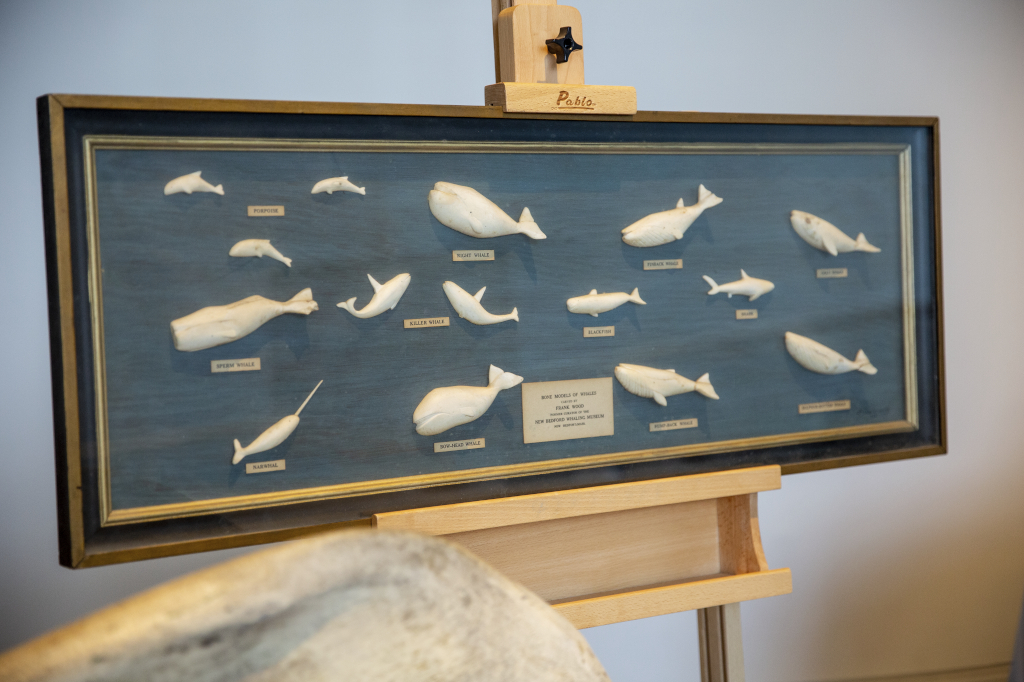
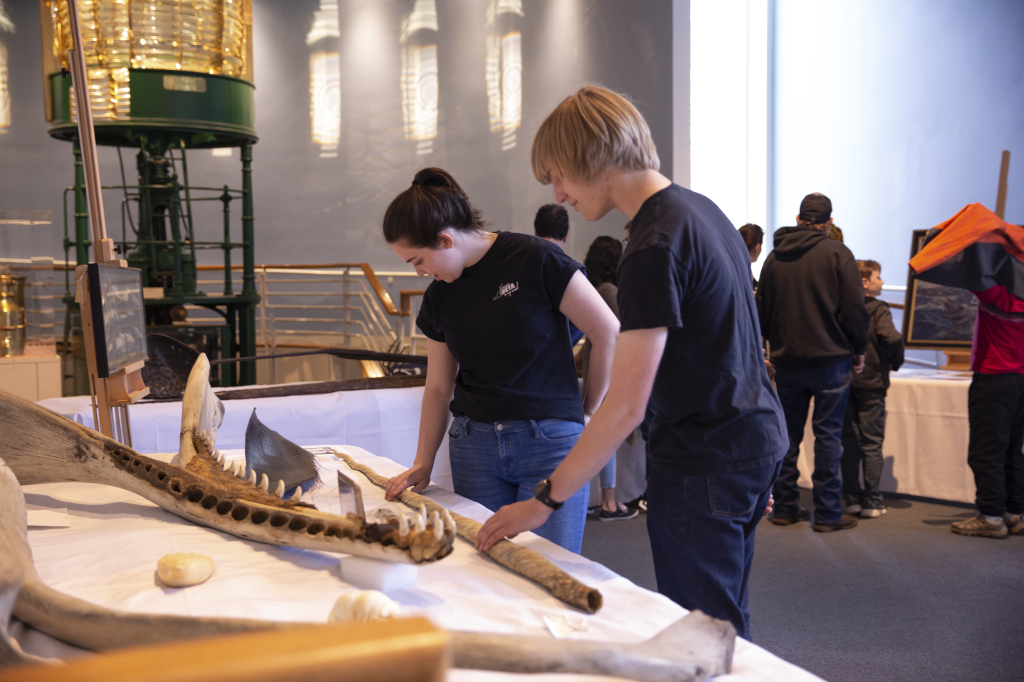
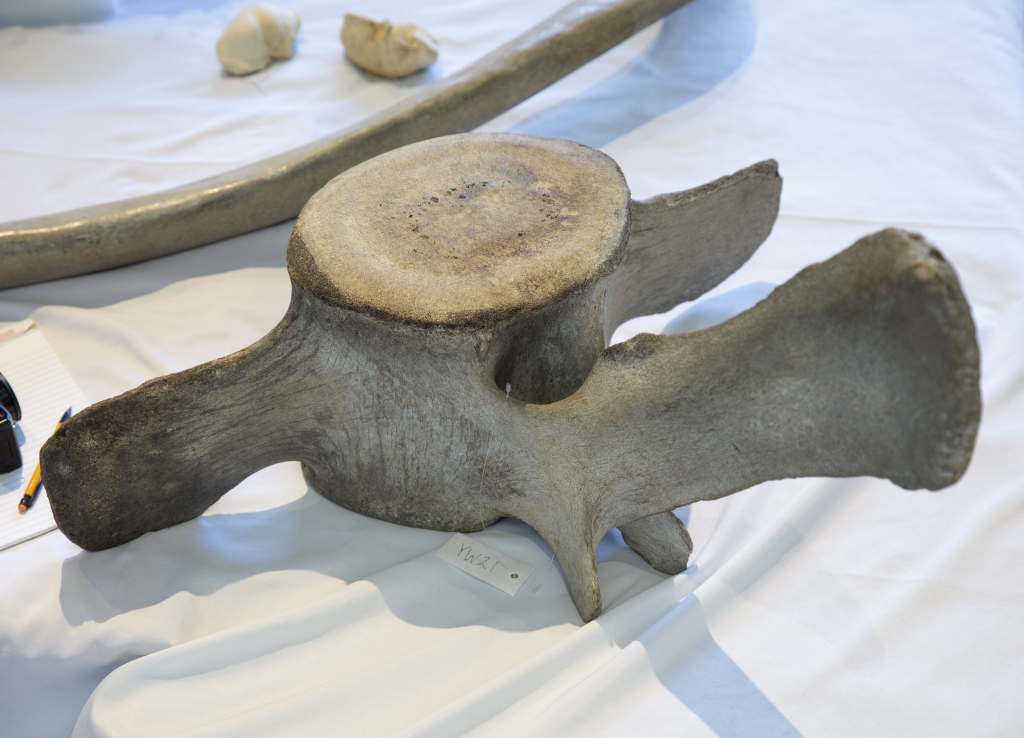
Ok, I’m Wrapping Up Now…
Moby Dick remains a profound American novel representing maritime literature. It is an epic tale of man versus nature, and shows the sea as a powerful element. It also gives us an insight into a unique period in our history. This novel has so much to it, and to be a part of a day that celebrates Herman Melville’s classic is truly unforgettable.
The Moby Dick read-a-thon and whaling display was an exciting experience for all of us involved. It was great to be able to create a program that brought literature and history to life. Visitors got to listen to the book’s narrative while seeing authentic pieces from our Collection. The Museum was buzzing with energy and enthusiasm. And even though it was just a 24-hour event, it took months of planning, research, and preparation. But in the end, everyone agreed it was a huge success. The Mariners’ Museum is not only entrusted to care for the items within our walls, but to also provide engaging experiences to our visitors. The Moby Dick read-a-thon is just one of many ways, I feel, we have fulfilled our mission of connecting people to the world’s waters because that is how we are connected to one another.
Photos credit: Brock Switzer/The Mariners’ Museum and Park